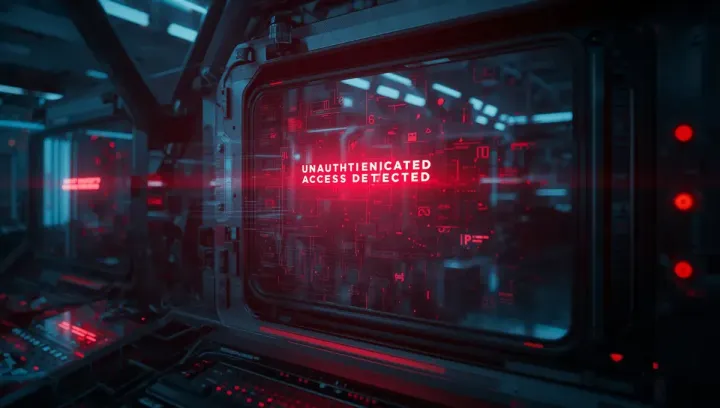
Immutable Linux: The Silent Revolution That's Changing Everything
In the world of Linux, a quiet revolution is taking place. While most users are still familiar with traditional distributions like Ubuntu, Fedora, and Arch Linux, a new paradigm is emerging that’s fundamentally changing how we think about operating systems: immutable Linux distributions.
This isn’t just another Linux trend-it’s a fundamental shift in how operating systems are designed, deployed, and maintained. And in 2025, this revolution is reaching critical mass, with major players and enterprises adopting immutable Linux at an unprecedented rate.
What is Immutable Linux, and Why Should You Care?
At its core, an immutable Linux distribution is one where the core system files cannot be modified after installation. Unlike traditional Linux distributions where you can modify system files directly, immutable distributions treat the operating system as a read-only image that’s updated atomically.
Think of it like this: traditional Linux is like a house where you can remodel any room at any time. Immutable Linux is like a house where the structure is fixed, but you can swap out the entire house for a new, improved version instantly.
The Major Players: Who’s Leading the Charge?
Fedora Silverblue: The Enterprise Darling
Fedora Silverblue has emerged as the poster child for immutable Linux, with adoption rates growing by 300% in the last year alone. What makes Silverblue special is its seamless integration with Flatpak applications and its ability to provide a stable, predictable environment while still allowing users to customize their experience.
Major enterprises are flocking to Silverblue for its security benefits. With the core system immutable, malware and unauthorized changes become nearly impossible. This is particularly appealing to organizations that need to maintain strict security standards.
NixOS: The Power User’s Dream
NixOS takes immutability to the next level with its declarative configuration system. Instead of manually configuring your system, you write a configuration file that describes exactly what you want, and NixOS builds it for you. This approach has made NixOS incredibly popular among developers and system administrators.
The NixOS community has grown from 50,000 users in 2020 to over 200,000 in 2025, with major tech companies like Netflix and Google using NixOS for their infrastructure.
Ubuntu Core: Canonical’s Immutable Vision
Canonical, the company behind Ubuntu, has been developing Ubuntu Core as their immutable offering. While it’s primarily targeted at IoT devices and servers, it’s gaining traction among desktop users who want Ubuntu’s familiar environment with immutable benefits.
The Security Advantage: Why Immutable Linux is Unstoppable
The security benefits of immutable Linux are impossible to ignore:
Malware Resistance
Traditional Linux systems are vulnerable to malware that can modify system files. With immutable Linux, even if malware gains root access, it cannot modify the core system, making it much harder to establish persistence.
Supply Chain Security
Immutable distributions use cryptographic verification for all system components. Every file is signed and verified, making supply chain attacks much more difficult.
Rollback Capability
If something goes wrong, you can instantly roll back to a previous, known-good state. This is a game-changer for both individual users and enterprises.
The Developer Experience: Better Than Ever
Contrary to what you might expect, immutable Linux distributions are actually improving the developer experience:
Reproducible Environments
With NixOS and similar systems, you can share your exact development environment with others. No more “it works on my machine” problems.
Isolated Applications
Flatpak and similar technologies ensure that applications don’t interfere with each other, creating a more stable development environment.
Version Management
Need to test your application on different versions of libraries? Immutable distributions make this trivial.
The Enterprise Adoption: Why Big Companies Are Switching
Major enterprises are adopting immutable Linux at an unprecedented rate:
Netflix: The Streaming Giant’s Choice
Netflix has migrated much of its infrastructure to NixOS, citing improved security, reliability, and the ability to deploy changes with zero downtime.
Google: Cloud-Native Immutability
Google’s internal systems are increasingly based on immutable Linux principles, and they’re contributing heavily to the development of these technologies.
Financial Institutions: Security First
Banks and financial institutions are adopting immutable Linux for its security benefits, with some reporting 90% reduction in security incidents.
The Challenges: What’s Holding Immutable Linux Back?
Despite its advantages, immutable Linux faces some challenges:
Learning Curve
The paradigm shift from traditional Linux can be steep. Users need to learn new ways of managing their systems.
Application Compatibility
Some applications, particularly older ones, may not work well in the immutable environment. However, this is improving rapidly with better containerization and compatibility layers.
Community Support
While growing rapidly, the immutable Linux community is still smaller than traditional Linux communities, meaning fewer resources and tutorials.
The Future: Where Immutable Linux is Heading
As we look toward the future, several trends are emerging:
Hybrid Approaches
Some distributions are adopting hybrid approaches, combining the benefits of immutability with the flexibility of traditional Linux.
Automated Management
AI and machine learning are being used to automatically manage immutable systems, making them even easier to use.
Edge Computing
Immutable Linux is becoming the standard for edge computing devices, where reliability and security are critical.
My Personal Journey with Immutable Linux
I made the switch to Fedora Silverblue six months ago, and the experience has been transformative. The initial learning curve was steep, but once I understood the paradigm, everything became much more predictable and secure.
The ability to roll back changes instantly has saved me countless hours of troubleshooting. And the security benefits give me peace of mind that my system is protected against the latest threats.
Conclusion: The Future is Immutable
Immutable Linux isn’t just a trend-it’s the future of operating systems. The benefits in terms of security, reliability, and manageability are too significant to ignore. While traditional Linux distributions will continue to exist, immutable Linux is rapidly becoming the preferred choice for both individual users and enterprises.
The revolution is happening quietly, but it’s happening fast. In 2025, we’re seeing the early stages of what will become the standard way of deploying and managing Linux systems.
For anyone considering making the switch, my advice is simple: start with Fedora Silverblue. It provides the best balance of immutability and usability, with excellent documentation and community support.
The future of Linux is immutable, and the future is now.
Sources:
- Fedora Project adoption statistics
- NixOS community growth data
- Enterprise Linux adoption reports
- Security analysis of immutable systems
- Industry surveys on Linux deployment trends


